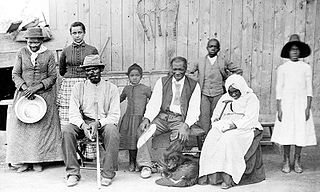 W
WHarriet Tubman was an American abolitionist and political activist. Born into slavery, Tubman escaped and subsequently made some 13 missions to rescue approximately 70 enslaved people, including family and friends, using the network of antislavery activists and safe houses known as the Underground Railroad. During the American Civil War, she served as an armed scout and spy for the Union Army. In her later years, Tubman was an activist in the movement for women's suffrage.
 W
WHarriet Tubman Grave is an historic gravesite located in Fort Hill Cemetery at Auburn, in Cayuga County, New York. The granite gravestone marks the resting place of famed African-American abolitionist and Christian Harriet Tubman, who was born into slavery in Maryland in the United States in 1822.
 W
WHarriet Tubman Day is an American holiday in honor of the anti-slavery activist Harriet Tubman, observed on March 10, and in the U.S. state of New York. Observances also occur locally around the U.S. state of Maryland. After Juneteenth became a federal holiday, there are growing calls for this day to also be observed at the federal level.
 W
WHarriet Tubman Museum is a museum in Cape May, New Jersey about Harriet Tubman.
 W
WHarriet Tubman Underground Railroad State Park is a Maryland state park dedicated to the life and work of abolitionist and Underground Railroad activist Harriet Tubman. The park is on Route 335 near Church Creek in Dorchester County, adjacent to Blackwater National Wildlife Refuge.
 W
WHarriet Tubman's birthplace is in Dorchester County, Maryland. Araminta Ross, the daughter of Benjamin (Ben) and Harriet (Rit) Greene Ross, was born into slavery in 1822 in her father's cabin. It was located on the farm of Anthony Thompson at Peter's Neck, at the end of Harrisville Road, which is now part of the Blackwater National Wildlife Refuge.
 W
WHarriet Tubman's family includes her birth family; her two husbands, John Tubman and Nelson Davis; and her adopted daughter Gertie Davis.
 W
WHarriet Tubman National Historical Park is a US historical park in Auburn and Fleming, New York, associated with the life of Harriet Tubman. It comprises three properties: the Harriet Tubman Home for the Aged, in Auburn; the nearby Harriet Tubman Residence ; and the Thompson A.M.E. Zion Church in Auburn. They are located at 180 and 182 South Street, and 90 Franklin Street, respectively. The Zion Church unit is administered by the National Park Service (NPS), while the South Street properties, including a historic barn and a visitor center, are jointly managed and operated by both the NPS and the Harriet Tubman Home, Inc. The church also works with the NPS in park operations. The Harriet Tubman Grave in nearby Fort Hill Cemetery is not part of the park.
 W
WThe Tilly Escape occurred in October 1856 when an enslaved woman, Tilly, was led to safety by Harriet Tubman. Historians who have studied Tubman consider it: "one of her most complicated and clever escape attempts." It was a risky trip because Tubman and Tilly would not have been able to travel directly from Baltimore to Philadelphia without proof that they were free women. In addition, local slave traders would have recognized strangers. Tubman sought to evade capture by going south, before heading north, and using different modes of transportation over water and land.
 W
WHarriet Tubman Elementary School is a public elementary school, named after Harriet Tubman, an African-American abolitionist, humanitarian, and Union spy during the U.S. Civil War. It is located in Washington, DC and is under the jurisdiction of the District of Columbia Public Schools. Over five hundred students are currently enrolled from pre-school to fifth grade.
 W
WHarriet Tubman Underground Railroad National Historical Park is a 480-acre (190 ha) National Park Service unit in the U.S. state of Maryland. It commemorates the life of former enslaved Harriet Tubman, who became an activist in the Underground Railroad prior to the American Civil War. The Harriet Tubman Underground Railroad National Monument was created by President Barack Obama under the Antiquities Act on March 25, 2013. The portion of the monument administered by the National Park Service was later designated a National Historical Park in 2014, and the remainder is managed by the Fish and Wildlife Service as part of Blackwater National Wildlife Refuge.